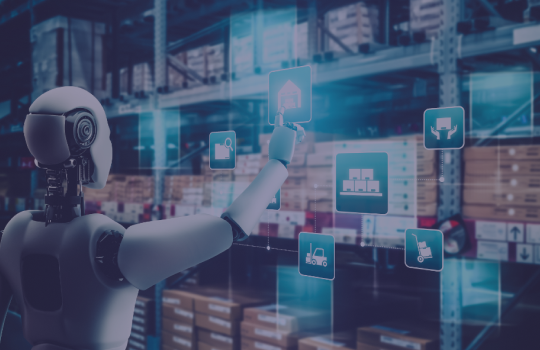How to Transition Your Business to Optimize Profit
How to Transition Your Business to Optimize Profit
In an era where retail profit optimization is increasingly driven by technological innovation, the use of artificial intelligence (AI) in retail is becoming pivotal. According to the World Economic Forum, the market for AI services in the retail sector is forecasted to grow from $5 billion to over $31 billion by 2028, highlighting the rapidly expanding role of AI in this industry.
This blog post explores the transformative impact of three AI technologies – Pricing AI, Inventory AI, and Competitor AI – on the retail sector. By integrating these tools, retailers can not only enhance their operational efficiency, but also gain a significant edge in the highly competitive retail landscape.
Quick Takeaways
- Pricing AI leverages artificial intelligence to analyze vast amounts of data, enabling retailers to set prices that are both competitive and profitable.
- Inventory AI uses real-time data, trend analysis, and predictive algorithms to optimize inventory levels, addressing common retail challenges such as overstocking and stockouts.
- Competitor AI provides real-time insights into competitors’ moves, allowing businesses to make informed strategic decisions quickly.
- The integration of Pricing AI, Inventory AI, and Competitor AI creates a synergistic effect that dramatically transforms a business’s profitability and operational efficiency.
Pricing AI
In today’s fast-paced retail environment, staying competitive means not only having the right products, but also pricing them effectively.
At its core, Pricing AI leverages artificial intelligence to analyze vast amounts of data, enabling retailers to set prices that are both competitive and profitable. An Accenture study forecasts a 59% boost in profitability across the Wholesale & Retail industry by 2035 through AI adoption, with early adopters potentially enjoying 8% higher profit margins compared to others.
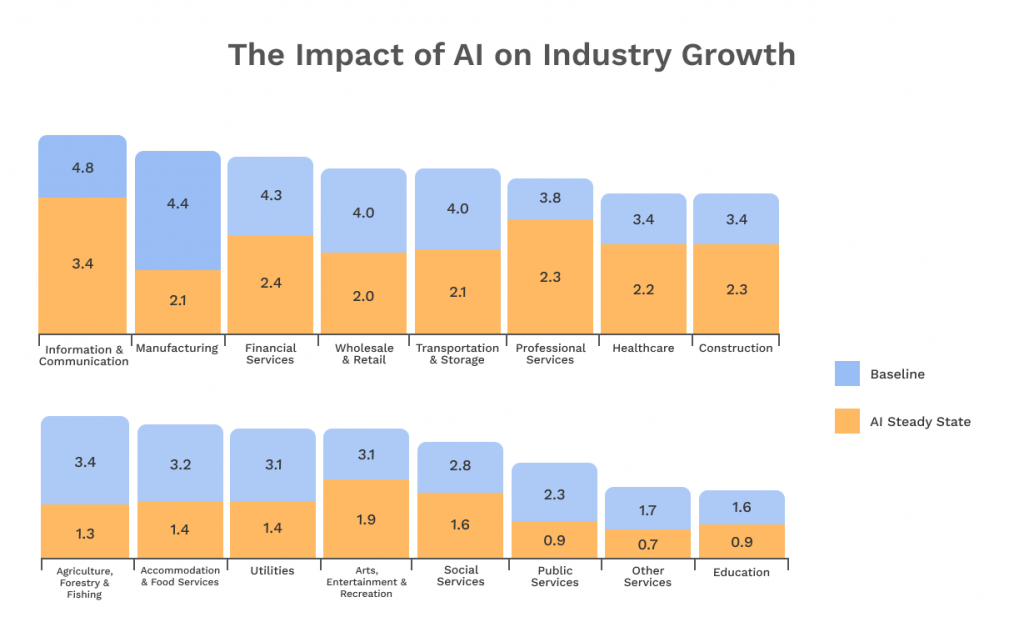
Unlike traditional pricing strategies, which often rely on historical data and manual analysis, Pricing AI utilizes real-time market trends, consumer behavior patterns, and economic indicators to dynamically adjust prices.
For example, a retailer using Pricing AI can automatically adjust the price of seasonal items based on things like:
- Current demand
- Competitor pricing
- Weather patterns
This level of responsiveness ensures that the retailer is always offering the right product at the right price, maximizing sales and margins. In essence, Pricing AI transforms the complex task of pricing into a more precise, automated, and efficient process.
Benefits of Pricing AI
- Dynamic Pricing Strategies. Pricing AI enables businesses to adjust prices in real-time based on various market factors. This adaptability ensures competitiveness and maximizes revenue opportunities.
- Improved Price Optimization. By analyzing factors like cost, demand, and customer price sensitivity, Pricing AI identifies the most profitable pricing points for each product.
- Increased Profit Margins. Automated pricing adjustments made by AI reduce the risks of human error and oversight, leading to more efficient and effective pricing strategies.
- Enhanced Competitiveness. With its ability to quickly respond to market changes and competitor actions, Pricing AI helps businesses stay competitive in a rapidly evolving retail landscape.
- Customer Satisfaction. Dynamic pricing doesn’t just benefit the retailer; it can also lead to fairer prices for consumers, as prices reflect the latest market conditions.
By leveraging these benefits, Pricing AI becomes a crucial tool for retailers seeking to optimize their pricing strategies in a way that boosts profitability while maintaining market competitiveness and customer satisfaction. The next sections will explore how Inventory AI and Competitor AI further aid in enhancing business efficiency and profit optimization.
Inventory AI
At its essence, Inventory AI harnesses artificial intelligence to predictively manage stock levels, ensuring that businesses have the right products at the right time.
Unlike traditional inventory management methods, which often rely on manual tracking and historical sales data, Inventory AI uses real-time data, trend analysis, and predictive algorithms to optimize inventory levels. This advanced approach to inventory management is crucial in addressing common retail challenges such as:
- Overstocking
- Stockouts
- Inefficient use of warehouse space
For example, Inventory AI can predict seasonal demand spikes, prompting businesses to stock up in advance, or scale down to prevent overstocking.
Advantages of Inventory AI
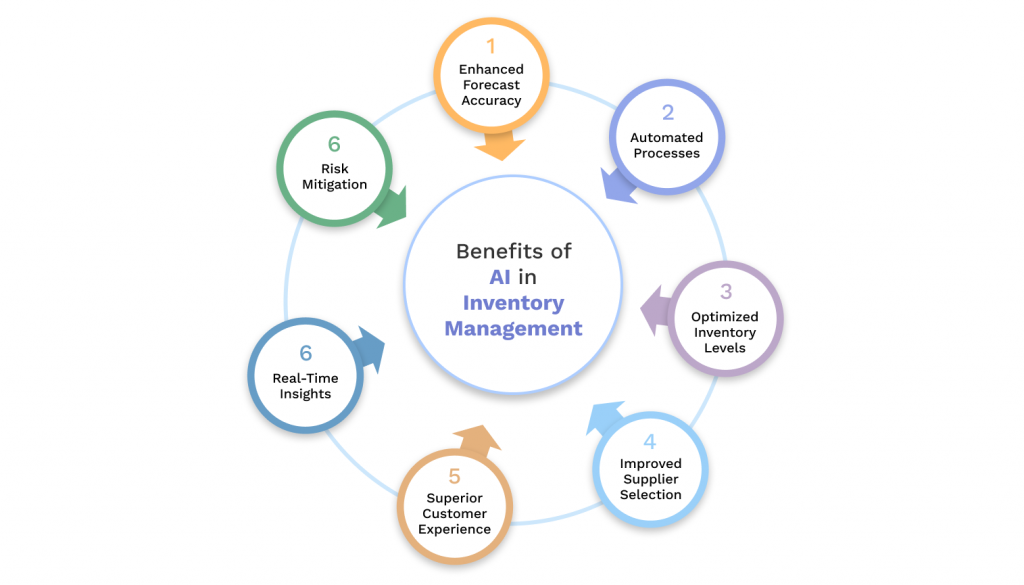
- Reduced Stockouts and Overstock. Inventory AI’s precise demand forecasting, based on sales patterns, market trends, and consumer behavior, minimizes the risk of stockouts and overstock situations.
- Enhanced Demand Forecasting. The dynamic adjustments of Inventory AI, continually updating forecasts with the latest data, allow businesses to adjust their inventory in real time.
- Improved Supplier Relationships. More accurate forecasts mean businesses can place more timely and precise orders with suppliers.
- Cost Savings. By maintaining optimal stock levels, Inventory AI helps reduce storage costs and minimize waste from unsold products.
- Better Customer Experience. Ensuring popular items are always in stock, Inventory AI enhances the shopping experience. This consistent product availability leads to increased customer satisfaction and loyalty, reinforcing the retailer’s brand and reputation.
Inventory AI represents a significant technological advancement in inventory management. By implementing this AI technology, retailers can not only streamline their inventory processes but also enhance overall business efficiency and customer satisfaction.
Competitor AI
Competitor AI refers to the use of artificial intelligence to analyze and interpret competitors’ actions and strategies in the market. This technology goes beyond traditional competitive analysis by continuously monitoring various data sources, including market trends, pricing strategies, promotional activities, and customer reviews.
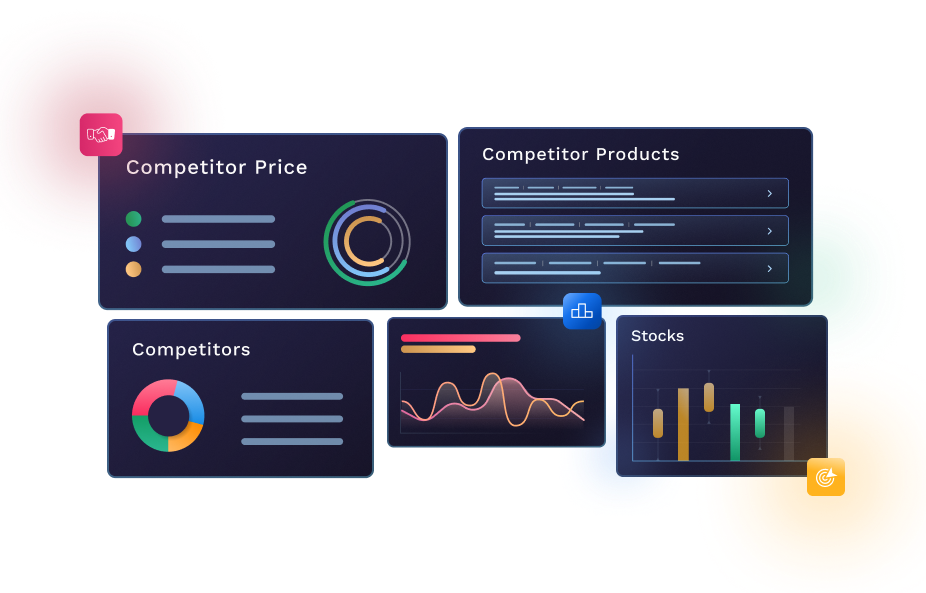
The power of Competitor AI lies in its ability to provide real-time insights into competitors’ moves, allowing businesses to make informed strategic decisions quickly. For example, if a competitor launches a new product or changes pricing, Competitor AI can alert a business instantly, enabling a rapid response to maintain competitiveness.
Benefits of Competitor AI
- Strategic Market Insights. Competitor AI provides deep insights into competitors’ actions, such as pricing and marketing strategies, enabling businesses to make more informed strategic decisions.
- Responsive Pricing Strategies. This AI tool allows businesses to adjust their pricing in real-time based on competitors’ changes, maintaining competitiveness while safeguarding profit margins.
- Enhanced Product Development. Competitor AI informs product innovation by highlighting market gaps and competitors’ offerings, guiding businesses in developing unique and in-demand products.
- Improved Customer Targeting. Analyzing competitors’ customer engagement tactics, Competitor AI assists businesses in refining their marketing approaches for more effective customer acquisition.
- Proactive Market Positioning. With Competitor AI, businesses can anticipate market trends and competitor moves, allowing them to proactively position themselves for competitive advantage.
By integrating Competitor AI, businesses gain a crucial edge in the retail landscape, staying informed and agile in their strategies. This technology, combined with Pricing AI and Inventory AI, creates a powerful trio for optimizing retail operations and maximizing profits.
Next, we will explore how these three AI technologies can work together to transform business profitability.
The Synergy of Pricing, Inventory, and Competitor AI
The integration of Pricing AI, Inventory AI, and Competitor AI represents a formidable combination in the realm of retail profit optimization. Each of these AI technologies offers significant benefits individually, but when combined, they create a synergistic effect that can dramatically transform a business’s profitability and operational efficiency.
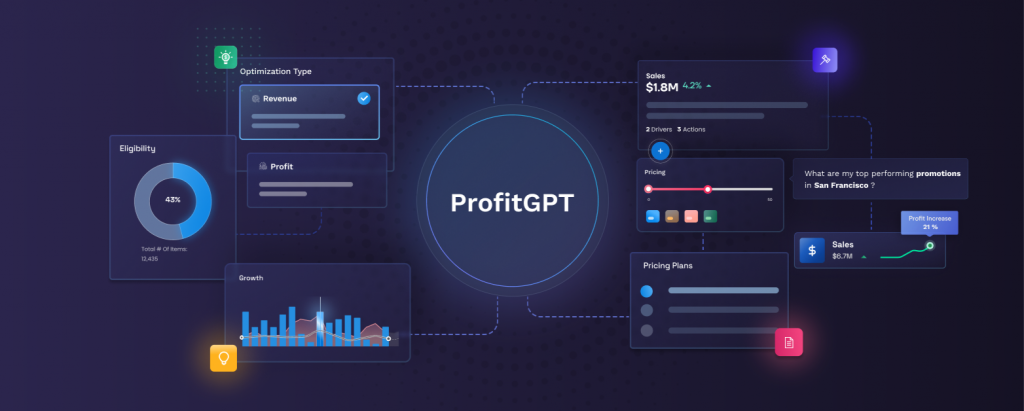
This section explores how these three AI levers work together to create a cohesive and dynamic retail strategy.
1. Comprehensive Market Understanding
By combining data and insights from all three AI systems, businesses gain a 360-degree view of the market. Pricing AI’s real-time pricing strategies, Inventory AI’s optimized stock levels, and Competitor AI’s insights into competitors’ actions work in tandem to provide a complete understanding of the retail landscape.
2. Dynamic and Adaptive Responses
The integration allows for dynamic and adaptive responses to market changes. For instance, Competitor AI’s insights can influence Pricing AI’s adjustments, ensuring prices are competitive yet profitable. Similarly, Inventory AI can respond to pricing strategies, ensuring stock levels are aligned with pricing changes and market demands.
3. Reduced Costs and Increased Margins
The combined use of these AI technologies leads to reduced operational costs and increased profit margins. Inventory AI’s efficient stock management reduces holding costs, while Pricing AI ensures products are sold at optimal prices. Competitor AI further refines this by ensuring that the business stays ahead of market trends and competitor strategies.
4. Enhanced Customer Satisfaction
This integration also leads to improved customer satisfaction. Pricing AI ensures fair and competitive pricing, Inventory AI guarantees product availability, and Competitor AI helps tailor offerings to meet market needs. Together, they enhance the overall customer experience, fostering loyalty and repeat business.
5. Data-Driven Decision-Making
The synergy of these AI tools enables businesses to make decisions based on a rich, data-driven foundation. This approach minimizes guesswork and enhances the strategic decision-making process, leading to more effective business strategies and outcomes.
6. Long-Term Competitive Advantage
By leveraging the combined strengths of Pricing, Inventory, and Competitor AI, businesses position themselves for long-term competitive advantage. They can adapt more quickly to market changes, anticipate future trends, and make informed decisions that drive business growth and profitability.
Harness AI for Future-Proof Retail Profit Optimization
Embracing the integration of Pricing AI, Inventory AI, and Competitor AI is pivotal for retail profit optimization. Each of these AI technologies brings its unique strengths to the table, but it’s their combined power that truly transforms the retail business landscape.
Hypersonix offers a profit enhancement platform, harnessing the power of AI to assist DTC and eCommerce enterprises in achieving excellence. With ProfitGPT’s inventory management capabilities, businesses can tap into generative AI and inventory insights, gaining valuable recommendations on stock levels and pricing tactics.
Discover how Hypersonix’s AI-driven solutions can revolutionize your pricing approach by scheduling a demo today!

